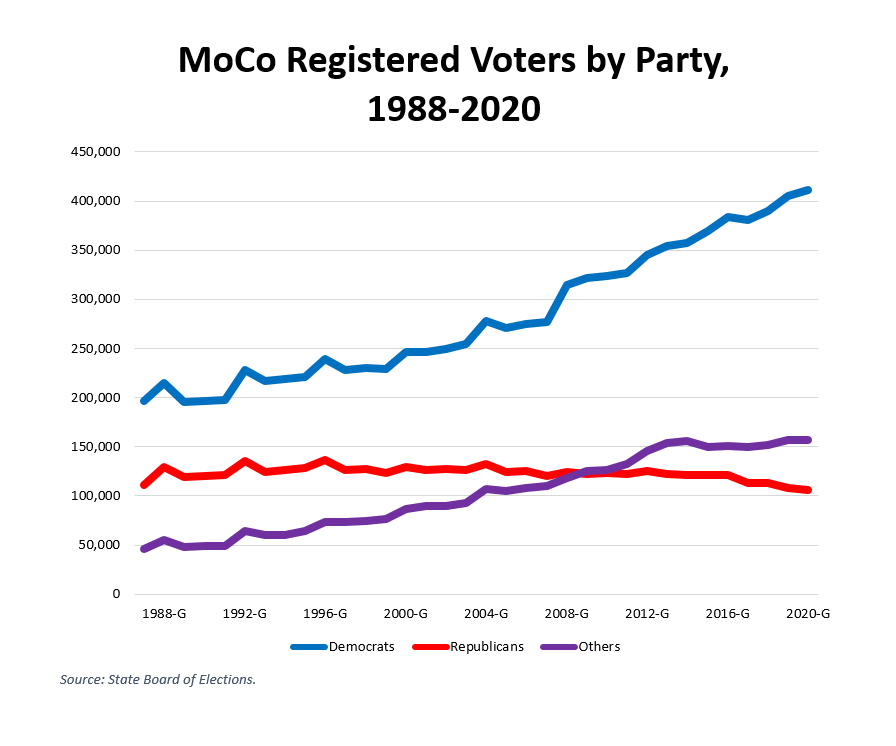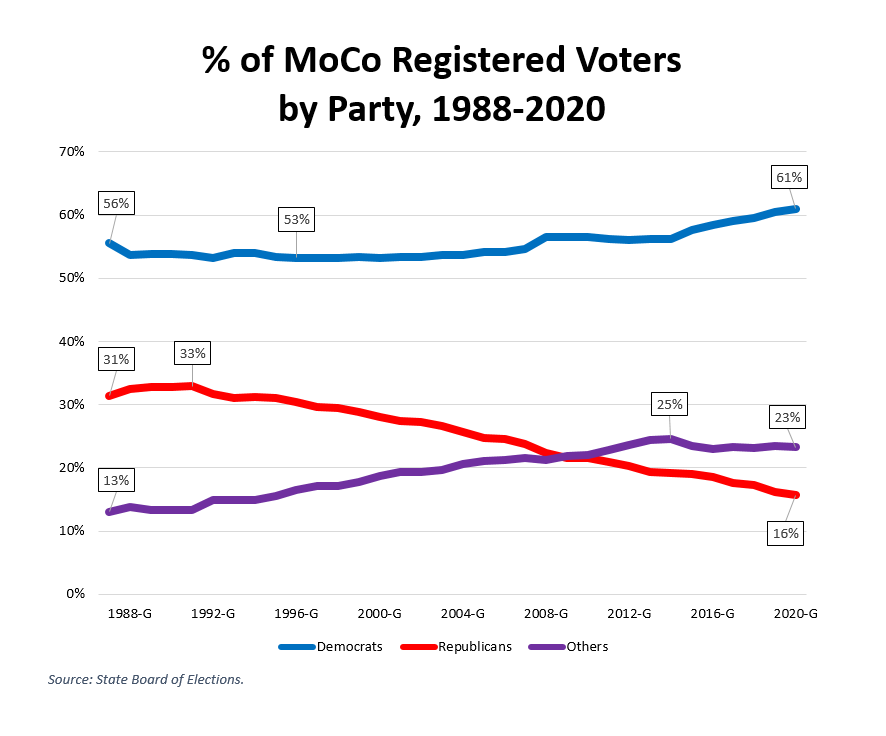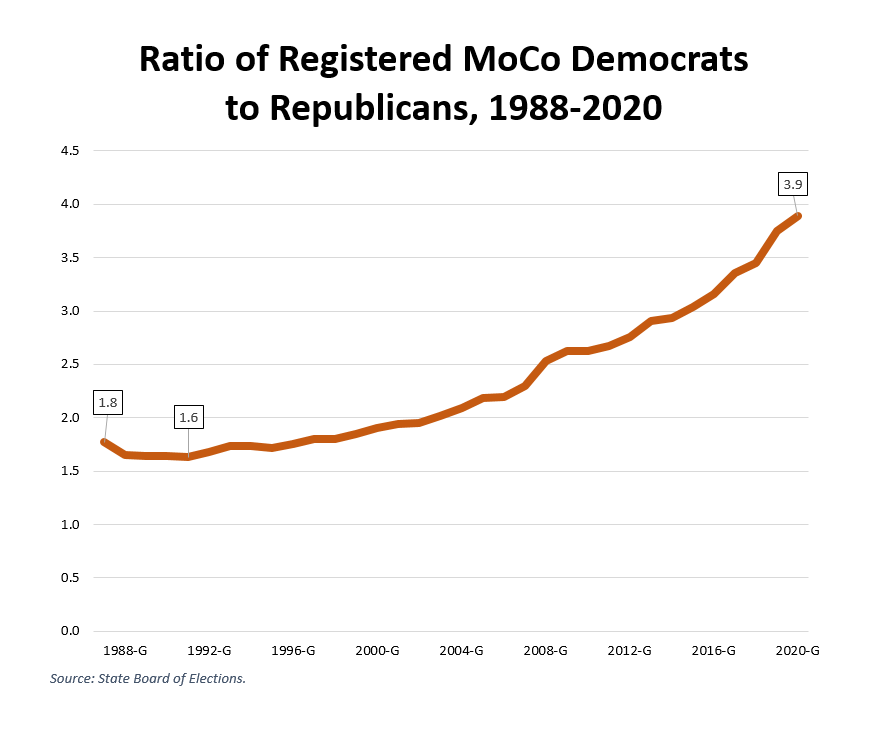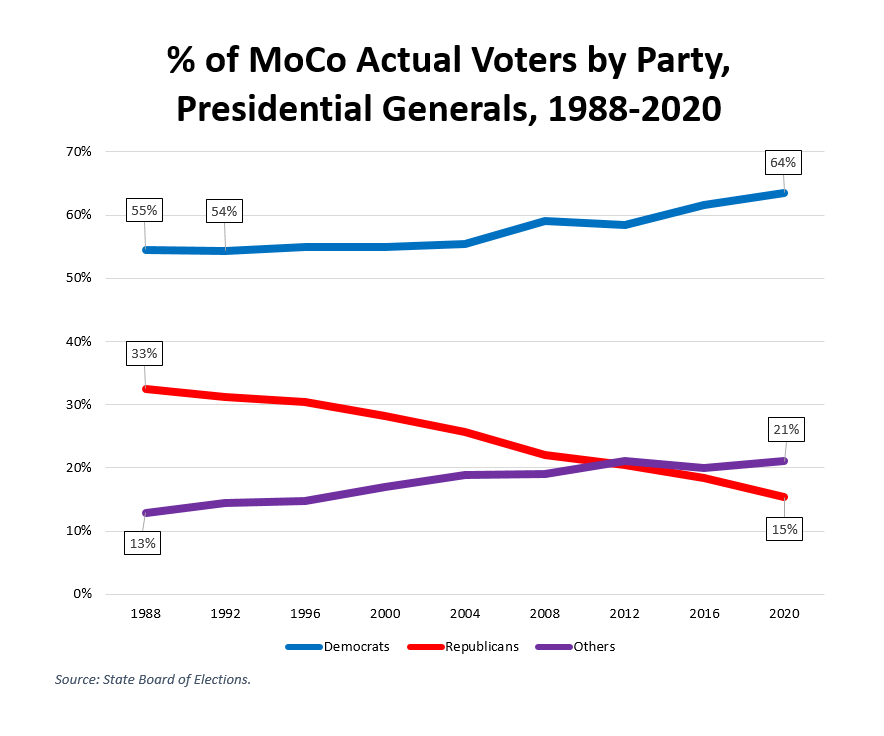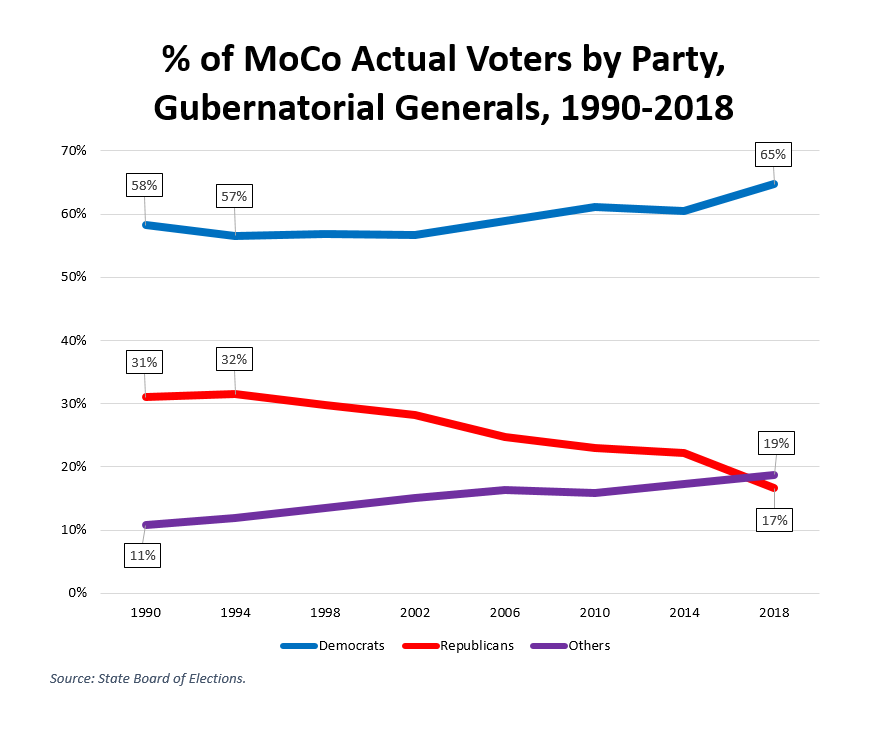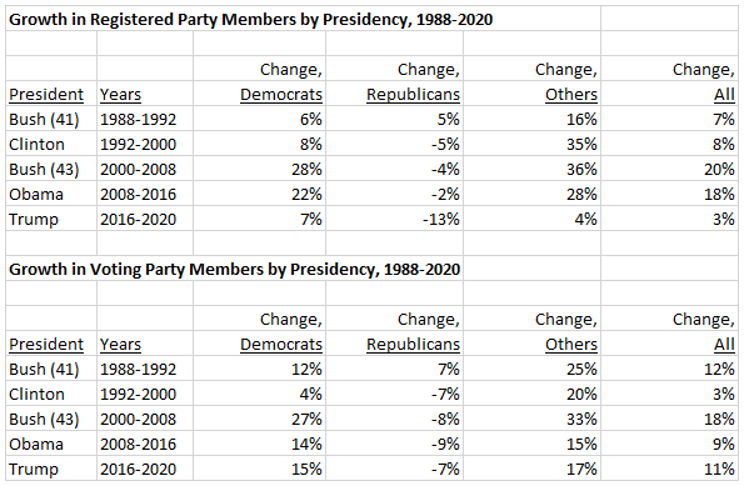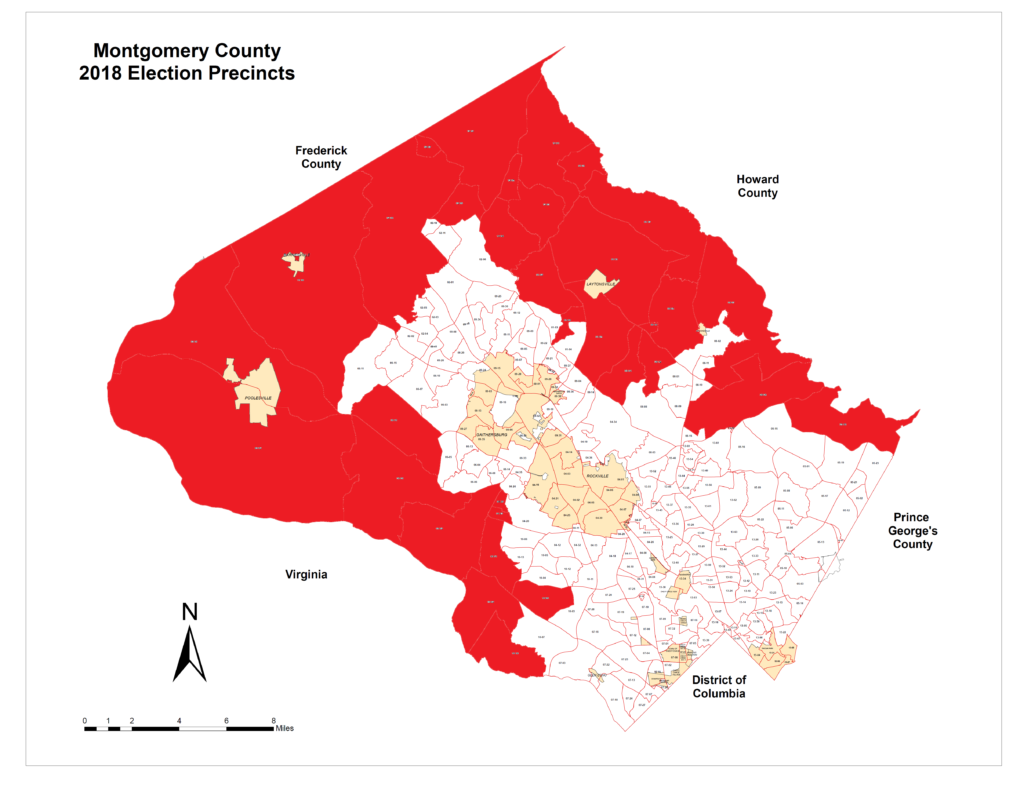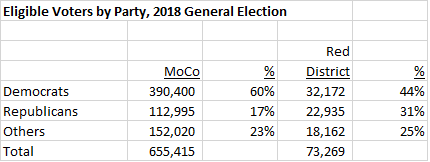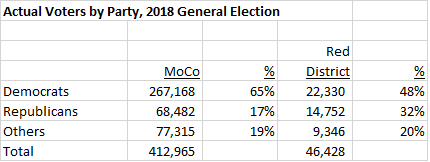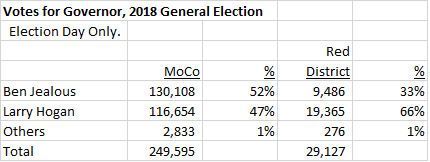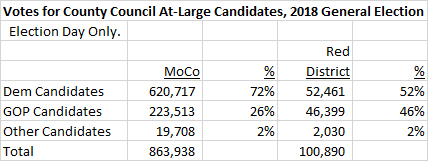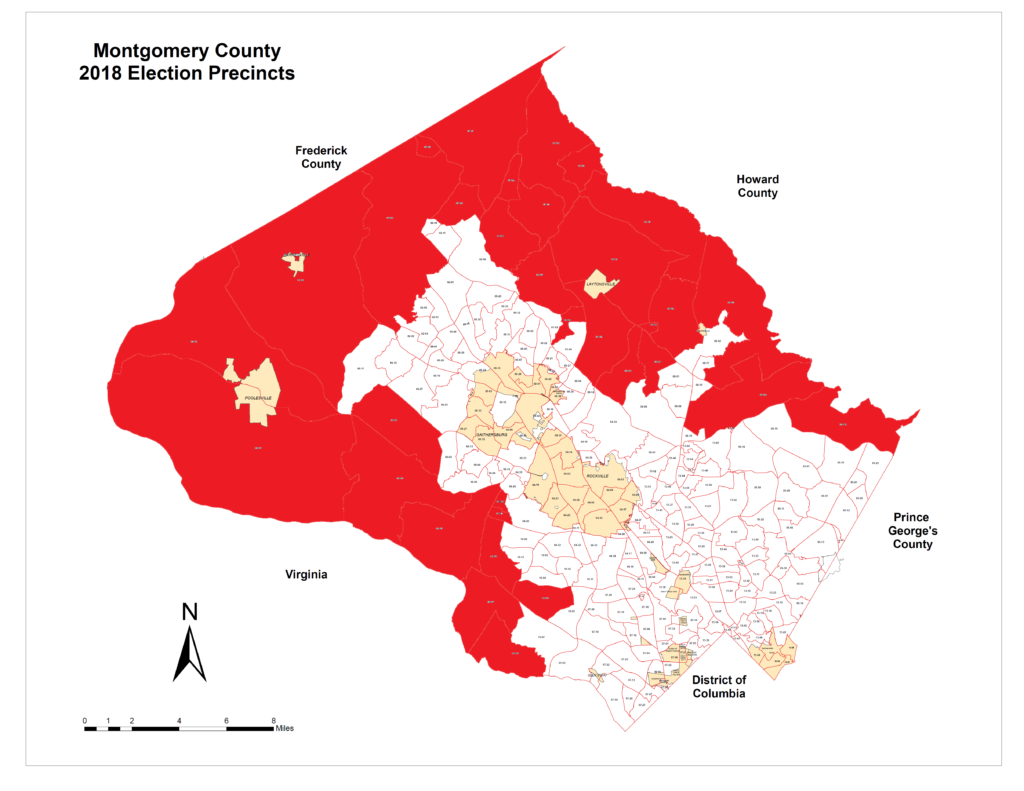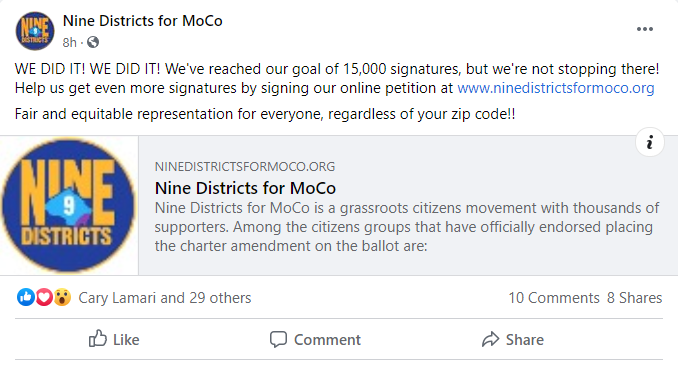By Adam Pagnucco.
Our post yesterday – MoCo Republicans in Freefall – has caught the attention of the county GOP. In an email sent to his colleagues shortly after our post went up, new MoCo Republican Central Committee Chairman Reardon Sullivan admitted that the party’s decline was real, blamed prior party leaders for their dilemma and listed a number of steps he and others are taking to turn things around.
That’s going to be tough. After all, the local party’s most famous figure is Robin Ficker, it has a long history of infighting and its top field guy (Brad Botwin) sends out regular blast emails attacking “illegal alien criminals/gang members.” Having Donald Trump and Bikini Chewbacca as the two national symbols of the GOP is also unhelpful in MoCo.
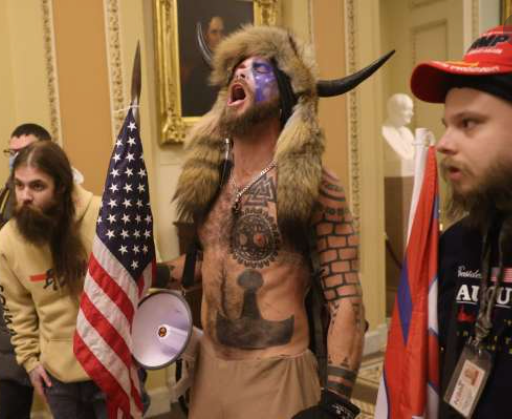
Here’s a guy who knows how to communicate.
Sullivan’s email is reprinted below. Grammar and spelling appear as in the email.
*****
Good Morning Central Committee and supporters
This morning’s emails gave us this post from the liberal blog “Seventh State” stating that the Republican Party is in freefall, and they are correct.
The past actors within our local party had failed to respond to changing demographics, utilize technology and support local candidates and initiatives resulting in a significant decline it the party during the past twelve years.
While our local party was asleep at the wheel, our conservative American values continue to be eroded by the liberals and progressives here in Montgomery County… I am dedicated to changing this trajectory but need your help…
We are building a new MCGOP, but this will not happen overnight. We are formally setting up subject matter committees, utilizing technology to reach current and prospective members, doing oppositional research and looking for new ways to lay the groundwork for a successful organization. We are looking for new ways to rebuild our presents in Montgomery County, reaching out to Republicans, independents with soft democrats with basic, clear simple, concise solutions give people reasons to want to be Republican and part of the solution.
In the past two months, we have:
1. Worked on strategies to increase our contact database using BOE data and lists compiled by others.
2. Reviewed our outreach strategies and are considering more tools than ever before.
3. Updated the MCGOP website to with an election tab to provide direction to people to register to vote and change parties. Thanks to Brad Botwin for the idea and Sharon Cohen for the updates.
4. Instituted orientation at MCGOP headquarters, led by Dan Cuda. We currently have double digit sign ups and growing.
5. Anne is working with the woman’s groups regarding legislative initiatives. Sandy is also working the legislative angle and Brad is testifying.
6. Ann is looking at candidate recruitment for both local municipal races as well as the county and state races.
7. Bill is working on Police and SRO issues.
Also critical to our comeback is fundraising as this effort takes money implement. I will personally donate $1000 today to the MCGOP and ask that each to you donate at least 10% or $100 this week.
I want to hear your ideas… feel free to e-mail me personally with “I will” action plans vs “we should” suggestions…
This will be a tough road, but I am confident that working together we can make a difference!!!!
Sully

